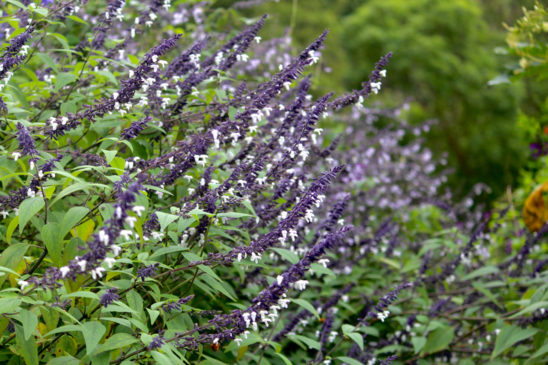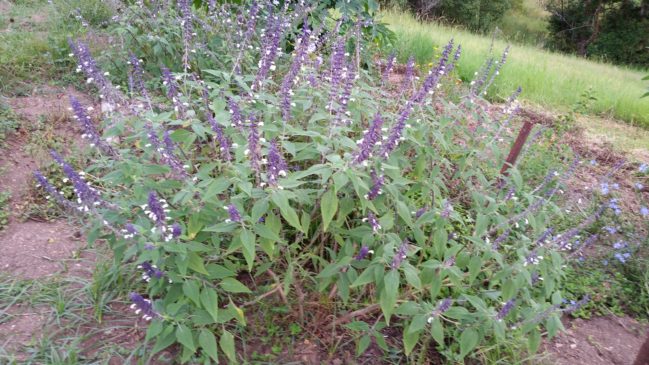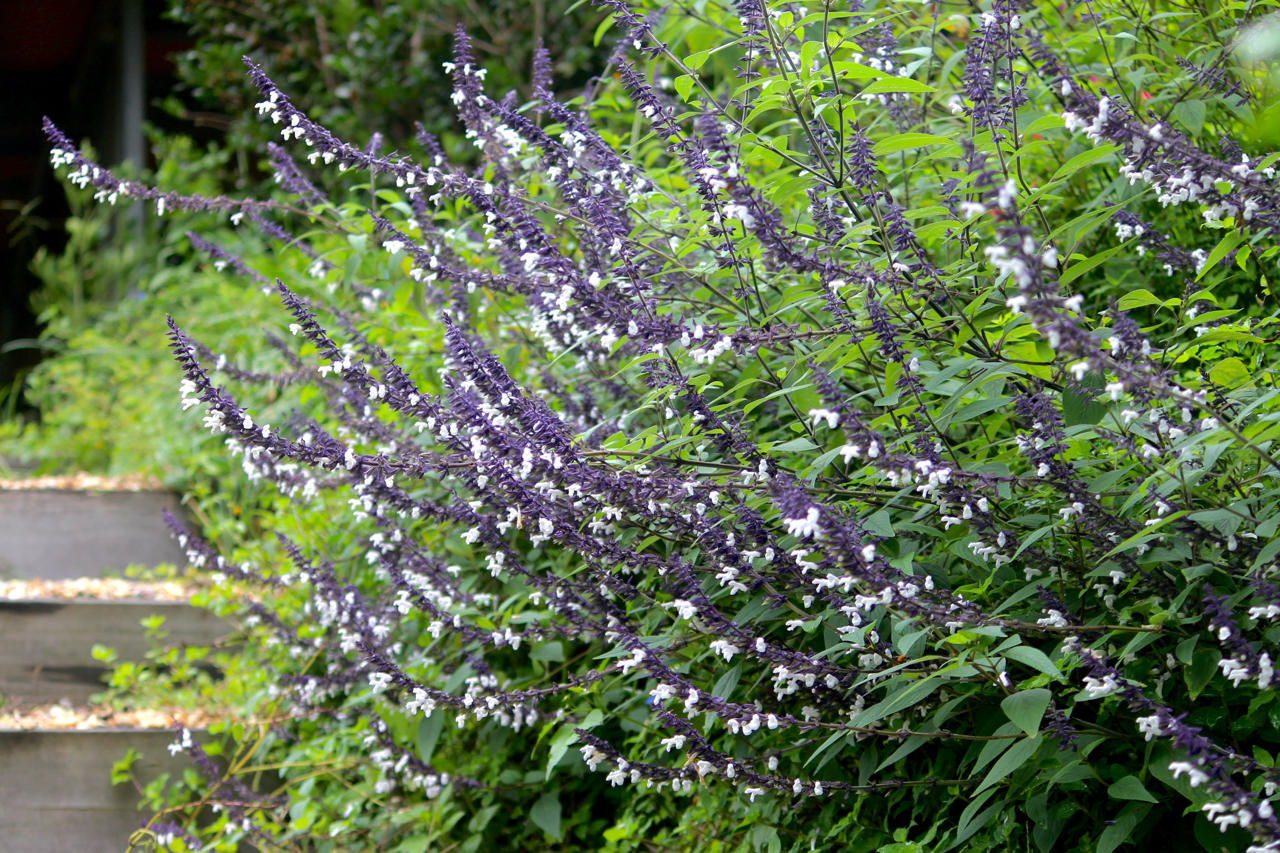 Salvia ‘Meigans Magic’ is one of three similar cultivars based on Salvia leucantha. All have white-based flowers with darker bracts, but ‘Waverly’ has a pink tinge and is a smaller plant, while ‘Phyllis Fancy’ is very similar with a blue tinge and paler look. What distinguishes ‘Meigans Magic’ is the dark calyces and more compact flower spikes.
Salvia ‘Meigans Magic’ is one of three similar cultivars based on Salvia leucantha. All have white-based flowers with darker bracts, but ‘Waverly’ has a pink tinge and is a smaller plant, while ‘Phyllis Fancy’ is very similar with a blue tinge and paler look. What distinguishes ‘Meigans Magic’ is the dark calyces and more compact flower spikes.
‘Meigans Magic’ is a branchy shrub and can fill a big area, up to 2 m high and 4 m diameter. I planted my original pair of ‘Meigans Magic’ and ‘Phyllis Fancy’ about a metre apart, and they have merged into a good sized mound. The growth habit is from canes in Spring, but these soon branch to fill out the space, and also fall outward under the weight of growth. Maybe ‘Meigans Magic’ produces more nectar than other salvias, because the bees really love it, especially our Teddy Bear Bees (Amegilla bombiformis) which draw attention with their loud buzzing.
Leaf blades are around 70 mm long, on 25 mm petioles, and taper to a point from about 25 mm at the widest near the leaf base. The margins are serrated and the veins are sharply set below, giving a quilted upper surface. The leaves are covered with hairs, giving a matt appearance, dark green above and greyish below with prominent white veins.

Stems have a dark blue or purple cast, which also distinguished this cultivar from ‘Phyllis Fancy’. The dark colour becomes more pronounced on the terminal flower spikes, where it continues into the sepals. The flower spikes are held out horizontally, and flowers sit below and to either side of the spikes. Spikes are also fairly compact, to around 200 mm long, compared with 500 mm on ‘Phyllis Fancy’. It is also later to flower fully than both ‘Phyllis Fancy’ and ‘Waverly’, and here comes into its best in March (early Autumn) although it begins flowering in early Summer. Like the other two it is long-flowering, with some for most of the year.
Cultivation
Full sun, well drained soil, and plenty of space. ‘Meigans Magic’ domes out to densely fill its position. When the flowers get straggly in late Winter it’s best to bite the bullet and prune the old canes back. I take the cue of the new canes forming from near ground level.
If you also have ‘Phyllis Fancy’ the two go well together with their subtle difference. As Phyllis flowers a little earlier there is also a progression of season.

